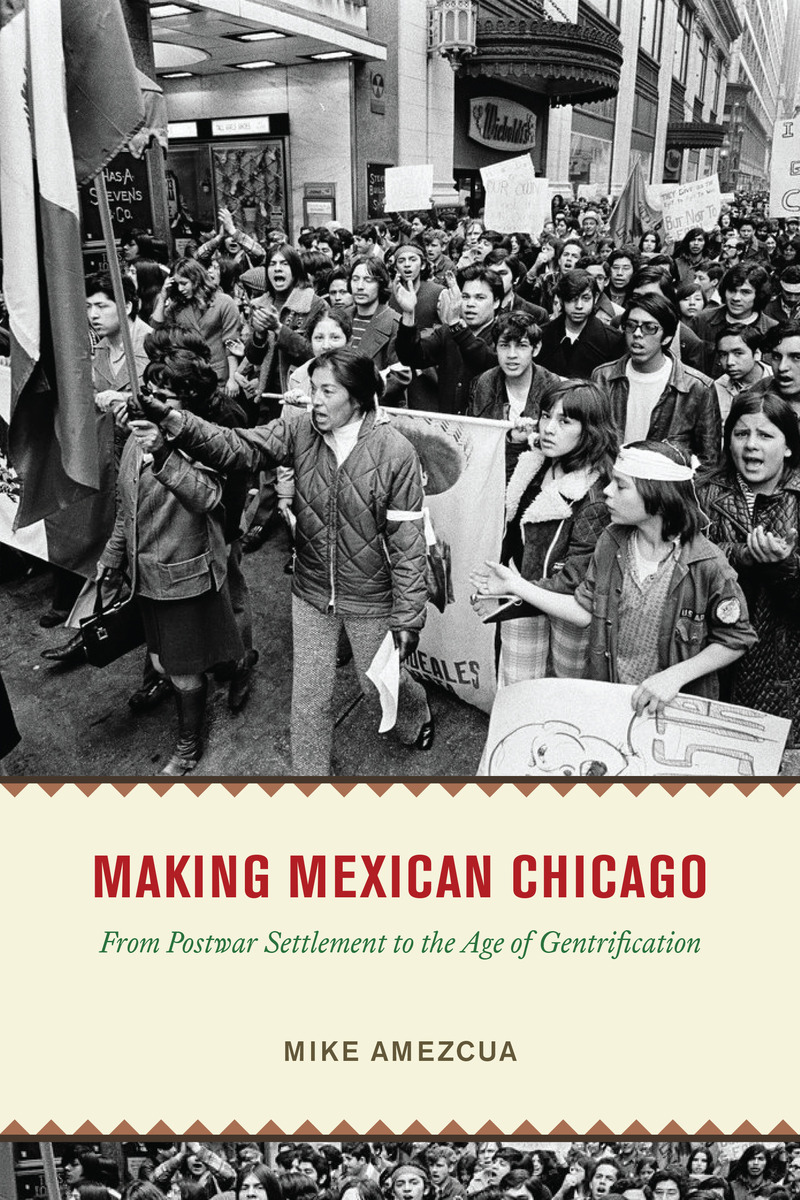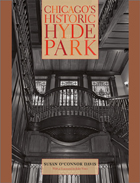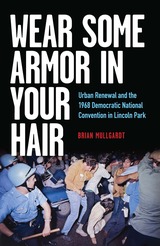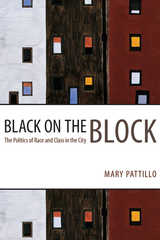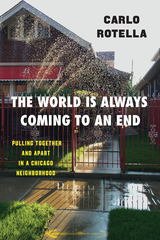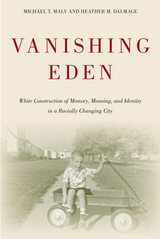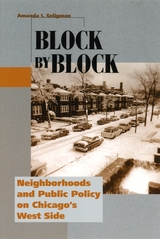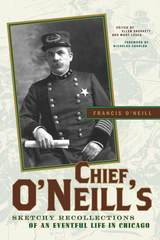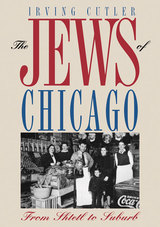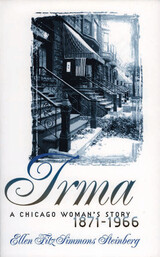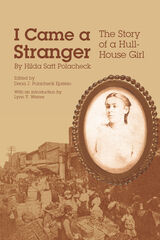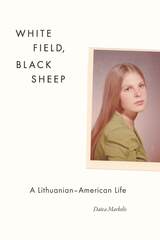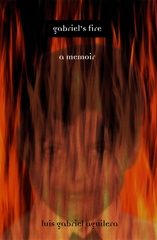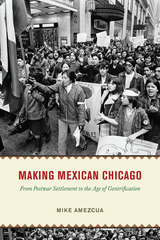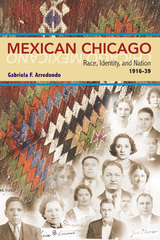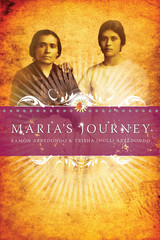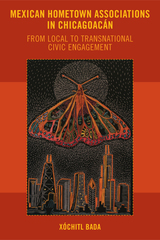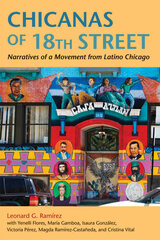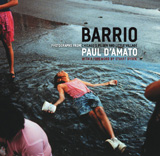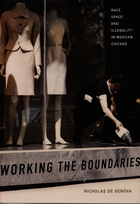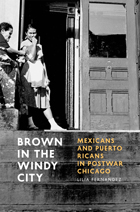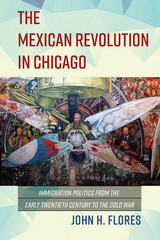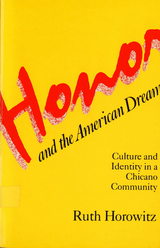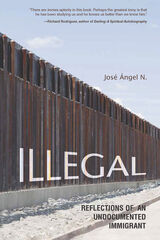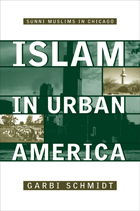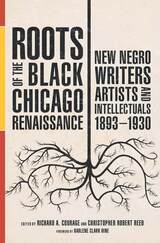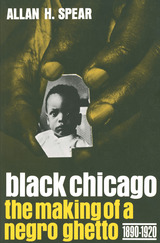“A superb addition to the growing body of work on the history of Latinx Chicago. Amezcua offers a nuanced story of the politics of place and space, using the history of housing, displacement, and urban renewal to explore broader patterns of urban change and the evolving strategies of a marginalized group in gaining access to power.”
— Lorrin Thomas, author of Puerto Rican Citizen: History and Political Identity in New York City
“Making Mexican Chicago is a superb analysis of race, property, and political power, with careful attention to the ways communities galvanize power across the twentieth century. Amezcua artfully exposes the ways that Mexicans and Mexican-Americans articulated their needs in a hostile and racist city through a variety of strategies—from coalition building to embracing capitalism to radical refusal. Amezcua makes visible how Chicago stood at the center of the transnational histories of Mexican migration and labor, the US immigration enforcement apparatuses, and the identification of Mexican-Americans as both the problem and solution during periods of change in urban centers. An outstanding contribution to urban history.”
— Marcia Chatelain, Pulitzer Prize–winning author of Franchise: The Golden Arches in Black America
“The story of the American city and its urban transformation is often told from the top down and within a black-white binary. With sophistication and care, Amezcua upends this narrative, surfacing the previously untold story of how Latinos shaped Chicago’s urban landscape and offering keen insights on culture, from beauty pageants to punk. After reading this book, we will wonder how we ever could have overlooked the role of Latinos in white flight, the rise of conservatism, and gentrification.”
— Natalia Molina, author of How Race Is Made in America: Immigration, Citizenship, and the Historical Power of Racial Scripts
“How did Chicago become one of the largest Mexican cities in the United States? In this fresh account of immigration, real estate, community organization, and politics, Amezcua moves beyond a simple narrative of repression and resistance and shows how Mexicans—as victims of discrimination but also as property owners, landlords, and grassroots activists—remade the city.”
— Thomas J. Sugrue, coauthor of Neoliberal Cities: The Remaking of Postwar Urban America
“Before Pilsen welcomed gallery spaces and Little Village became La Villita, the city’s Mexican population fought to make their voices heard and for places to live. Amezcua chronicles this decades-long struggle in his compelling Making Mexican Chicago. . . Throughout this history, Amezcua highlights myriad personalities and their transformations."
— Chicago Reader
"Making Mexican Chicago explores the spatial precarity experienced by the largest Latinx demographic in the city—ethnic Mexicans. Amezcua argues that although they were victims of containment by restrictionist neighbors, businesses, and government officials, Mexican immigrants and Mexican Americans were placemakers who developed their surroundings with their belonging in mind. Additionally, Amezcua notes that in articulating the Mexican urban experience, we can revisit our understanding of the rise of modern conservatism in the United States. . . . By centering the ethnic Mexican experience within the history of Chicago, Amezcua places the fight over neighborhoods, segregation, and property rights in a multiracial context."
— The Metropole
“In his new book, Making Mexican Chicago, Amezcua documents an extended story of political engagement and cultural distinctiveness. He draws connections between two struggles against different forms of displacement that have targeted the local Mexican community since the 1950s.”
— Chicago Tribune
"A compelling and disturbing book. . . Telling details and a skillfully constructed narrative bring alive Mexican efforts to create a refuge."
— Kirkus Reviews
"Highly recommended. . . Amezcua provides a passionate in-depth analysis."
— Choice
"This carefully documented historical study follows the ups and downs of twentieth-century Chicago as it shifted from a thriving powerhouse to a post-industrial city, as told through the saga of generations of Mexican labourers recruited to work in the packing houses and the steel industry... While there is no dearth of historical scholarship focusing on the Windy City, this book’s major contributions lie in the breadth and depth of Amezcua’s story-telling."
— Ethnic and Racial Studies
"Amezcua provides critical insights into how Mexicans and Mexican Americans fought for inclusion—residentially, politically, economically, and culturally—in the Windy City . . . The history that Amezcua tells in Making Mexican Chicago is both inspiring and agonizing."
— The Nation
“Bristling with original insights, big questions, and inspiring characters, Making Mexican Chicago demonstrates the importance of placing Mexicans and Mexican Americans at the center of US history to understand broader phenomenon including industrial unionism, white flight, and urban renewal. Amezcua replaces longstanding stereotypes with facts to illuminate a rich narrative of Mexican American unionists, businesswomen, and political leaders who endeavored to improve life in Chicago for everyone. Making Mexican Chicago is destined to be a classic in modern American history.”
— Paul Ortiz, author of An African American and Latinx History of the United States
“Making Mexican Chicago provides a foundational approach to the ever-growing field of Latinx Urbanism that analyzes the Latinx community not as a monolith in American society, but as a changing and dynamic force in urban environments like the Windy City.”
— NACLA Report on the Americas
"Amezcua chronicles the 20th-century struggle of Mexicans/Mexican Americans to win a place in Chicago’s economic and political structure. . . . an excellent read. . ."
— Urban Studies
"Amezcua’s Making Mexican Chicago provides an extensive interpersonal look at the brown lives that have come to shape the legacy of the white city."
— Jojo Galvan Mora, Journal of American Ethnic History (JAEH)
"Making Mexican Chicago is a critical contribution to the historiography of ethnic Mexican urban settlement in the second half of the 20th century."
— LABOUR / LE TRAVAIL
"This book does a great deal in 250 pages. . . showing the tremendous amount of oral history gathering Amezcua engaged in for this project. He enlivens the history of community-building through the incorporation of real people and their stories. . . [Making Mexican Chicago] traverses overlooked parts of US history by providing a genealogy of macro/micro sociopolitical moments that have influenced society’s modern-day conceptualizations around Mexicans, not just in Chicago but in the US more broadly, and it does so with voices so far omitted from much of the academic record."
— Society for US Intellectual History
